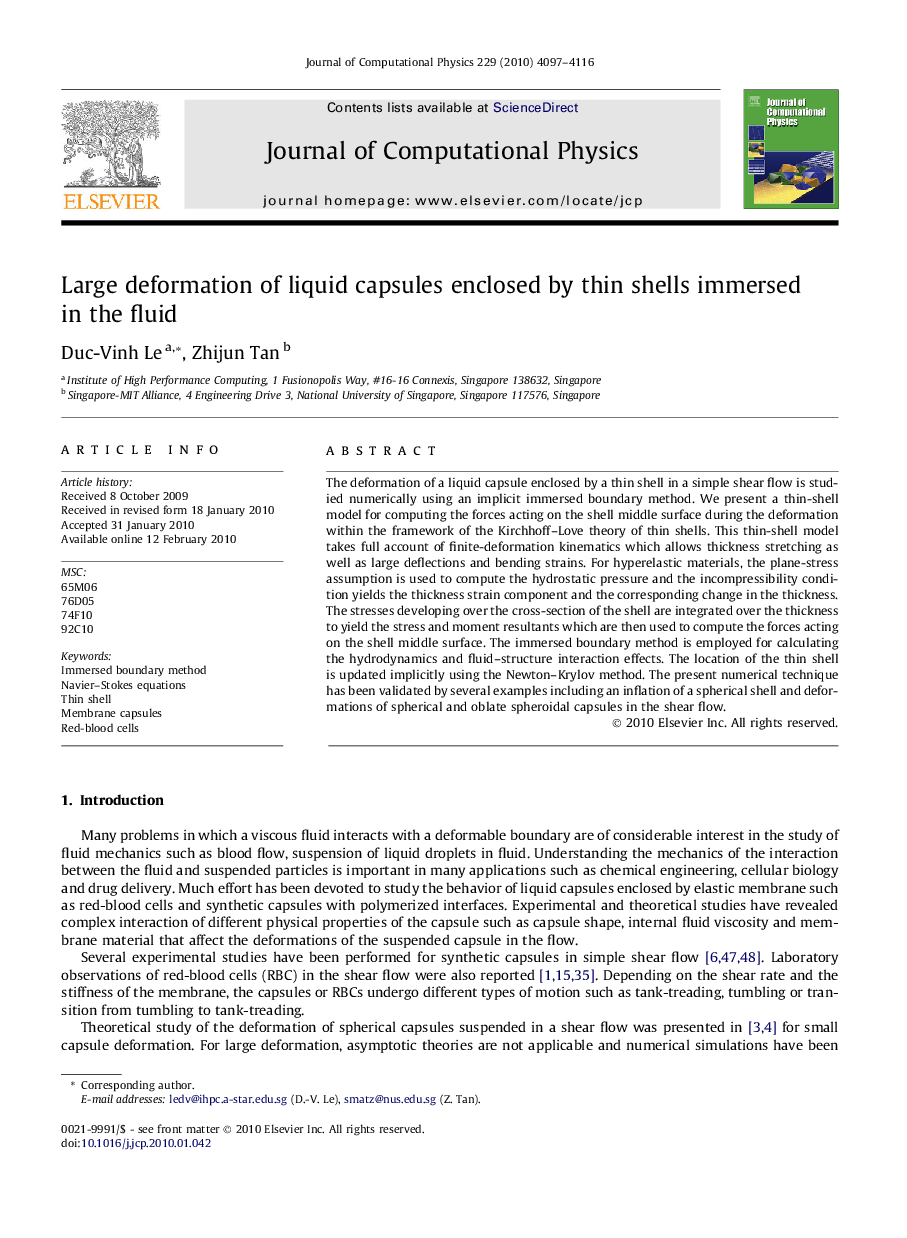| Article ID | Journal | Published Year | Pages | File Type |
|---|---|---|---|---|
| 521230 | Journal of Computational Physics | 2010 | 20 Pages |
The deformation of a liquid capsule enclosed by a thin shell in a simple shear flow is studied numerically using an implicit immersed boundary method. We present a thin-shell model for computing the forces acting on the shell middle surface during the deformation within the framework of the Kirchhoff–Love theory of thin shells. This thin-shell model takes full account of finite-deformation kinematics which allows thickness stretching as well as large deflections and bending strains. For hyperelastic materials, the plane-stress assumption is used to compute the hydrostatic pressure and the incompressibility condition yields the thickness strain component and the corresponding change in the thickness. The stresses developing over the cross-section of the shell are integrated over the thickness to yield the stress and moment resultants which are then used to compute the forces acting on the shell middle surface. The immersed boundary method is employed for calculating the hydrodynamics and fluid–structure interaction effects. The location of the thin shell is updated implicitly using the Newton–Krylov method. The present numerical technique has been validated by several examples including an inflation of a spherical shell and deformations of spherical and oblate spheroidal capsules in the shear flow.
